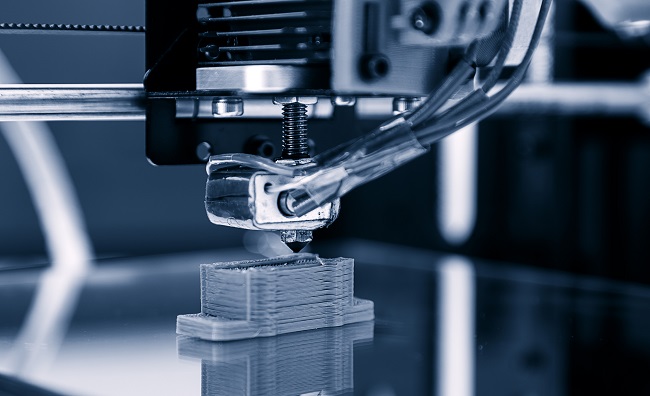Whether creating prototypes for application components, precision gears, or jewelry, more manufacturers are turning to the capabilities provided by 3D metal printing. Also called additive manufacturing, this process relies on technology that uses a metal powder in a layering process to produce the three-dimensional part. There are several methods used in the 3-D metal printing process including selective laser melting (SLM), electron beam melting (EBM), and direct metal laser sintering (DMLS).
For SLM and DMLS processes, an inert gas is filled into the chamber as a laser melts or fuses the metal powder’s particles together. Then another layer of the power is added as the procedure is done again until the full component is created. The SLM process typically uses only one metal powder to create a part as the powder has a single melting point. The DMLS method will use several metal alloys that have varying melting temperatures to build the part.
Metals and Alloy Types and Properties
Metals and alloys used in 3D metal printing provide manufacturers with a low cost alternative in building components for a multitude of industries and applications. Common metal materials are nickel-based super alloys such as Inconel, copper alloys, cobalt-chrome alloys, titanium alloys, aluminum alloys, stainless steels, precious metals such as gold and silver, and tool steels. Some manufacturers may also develop specific metal powders for use. Characteristics and properties that these metals and alloys are:
Nickel-Based Super Alloys (Inconel): Nickel-based super alloys are excellent for components that will be used in extreme temperature and corrosion environments. Inconel can withstand temperatures up to 1200oC and are ideal where weather and salt water corrosion takes place as the metal has a high resistance. The mechanical properties of nickel-based super alloys are also superb, making this metal powder suitable for many commercial applications.
Nickel-based alloys material specs: Inconel 625, Inconel 713, Inconel 718, Inconel 738, Hastelloy X
Titanium Alloys: For components used in the medical industry, titanium alloys are preferred due to their biocompatibility. It is highly resistant to corrosion that may be caused by human body fluids and won’t cause negative health reactions, as it can be manufactured into implants. In addition, titanium alloys also have low thermal expansion and a great strength-to-weight ratio for applications.
Titanium alloys material specs: Titanium grade 2, Ti6Al4V, TiAL6Nb7, Ti6Al4V ELI
Cobalt-Chrome Alloys: Like titanium, cobalt-chrome alloys are also biocompatible. These extremely hard alloys are desired for applications where there needs to be excellent wear and corrosion resistance.
Cobalt-Chrome alloys material specs: ASTM F75, CoCrWc
Aluminum Alloys: When the end material’s weight is a factor, aluminum alloys are typically chosen. They provide good electrical conductivity as well as mechanical and thermal properties. These alloys are also low density. One drawback to aluminum alloy powders is the low hardness, which could lead to component fatigue when used in applications with high stresses or loads.
Aluminum alloys material specs: ALSi12, ALSi7Mg, ALSi10Mg,
Stainless Steels and Tool Steels: Stainless steels, as well as tool steels (carbon & alloy steel varieties), are commonly desired for applications where the 3D printed product requires high strength and hardness properties for greater wear resistance. These metals also provide good weldability and are ductile for applications.
Stainless Steels material specs: SS 316 L, SS 304, SS 440, SS 410, 17-4 PH, 15-5 PH
Precious Metals: Precious metals such as gold, silver, palladium and platinum are used in jewelry making applications. These metals can provide an aesthetically pleasing finish for applications where delicate and geometric features are desired.
Pure Copper & Copper Alloys: While copper has excellent electrical and thermal conductivity, these metals are not commonly used in additive manufacturing. Due to their surface properties, copper alloys and pure copper will reflect the laser’s radiation of 1 micron wavelengths back at the equipment, causing machine damage. Also, the material rapidly absorbs the infrared light as it goes through an unstable and intermittent remelting process. However, organizations including NASA are switching to developing new copper alloys and using green lasers with 515 nm wavelengths in 3D metal printing applications.
When selecting metal powders to create 3D metal printing, the powders should possess a high packing density and low porosity to avoid fatigue and component fractures during the build. The powder should also be spherical particles in sizes of 50 micrometers to 150 micrometers depending on the application as it needs to have a fine microstructure for good flow output and coating distribution. For more information regarding metal powders used in 3D metal printing, contact Belmont Metals.

